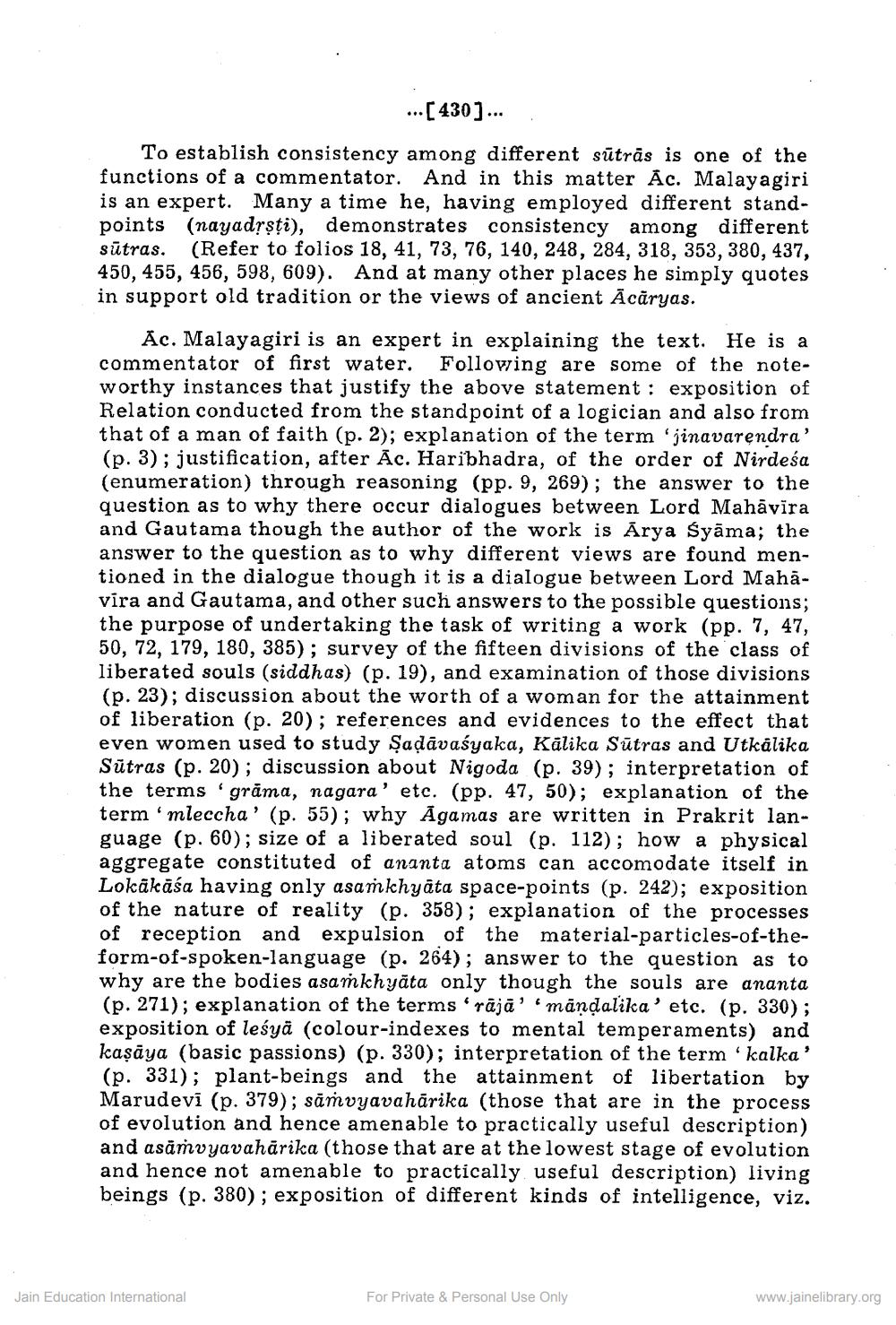________________
... [430]...
To establish consistency among different sūtras is one of the functions of a commentator. And in this matter Ac. Malayagiri is an expert. Many a time he, having employed different standpoints (nayadrsti), demonstrates consistency among different sūtras. (Refer to folios 18, 41, 73, 76, 140, 248, 284, 318, 353, 380, 437. 450, 455, 456, 598, 609). And at many other places he simply quotes in support old tradition or the views of ancient Ācāryas.
Ac. Malayagiri is an expert in explaining the text. He is a commentator of first water. Following are some of the noteworthy instances that justify the above statement : exposition of Relation conducted from the standpoint of a logician and also from that of a man of faith (p. 2); explanation of the term 'jinavarendra' (p. 3); justification, after Ac. Haribhadra, of the order of Nirdesa (enumeration) through reasoning (pp. 9, 269); the answer to the question as to why there occur dialogues between Lord Mahāvīra and Gautama though the author of the work is Arya Syāma; the answer to the question as to why different views are found mentioned in the dialogue though it is a dialogue between Lord Mahāvira and Gautama, and other such answers to the possible questions; the purpose of undertaking the task of writing a work (pp. 7, 47, 50, 72, 179, 180, 385); survey of the fifteen divisions of the class of liberated souls (siddhas) (p. 19), and examination of those divisions (p. 23); discussion about the worth of a woman for the attainment of liberation (p. 20); references and evidences to the effect that even women used to study Şaļāvaśyaka, Kalika Sūtras and Utkälika Sūtras (p. 20); discussion about Nigoda (p. 39); interpretation of the terms 'grāma, nagara' etc. (pp. 47, 50); explanation of the term mleccha' (p. 55); why Agamas are written in Prakrit language (p. 60); size of a liberated soul (p. 112); how a physical aggregate constituted of ananta atoms can accomodate itself in Lokākāśa having only asamkhyāta space-points (p. 242); exposition of the nature of reality (p. 358); explanation of the processes of reception and expulsion of the material-particles-of-theform-of-spoken-language (p. 264); answer to the question as to why are the bodies asaṁkhyāta only though the souls are ananta (p. 271); explanation of the terms rājā' mandalika' etc. (p. 330); exposition of leśyā (colour-indexes to mental temperaments) and kaşāya (basic passions) (p. 330); interpretation of the term 'kalka' (p. 331); plant-beings and the attainment of libertation by Marudevī (p. 379); samvyavahārika (those that are in the process of evolution and hence amenable to practically useful description) and asāmvyavahärika (those that are at the lowest stage of evolution and hence not amenable to practically useful description) living beings (p. 380); exposition of different kinds of intelligence, viz.
Jain Education International
For Private & Personal Use Only
www.jainelibrary.org




